Mother tigress was trying to free the cub’s paw until the moment people arrived.
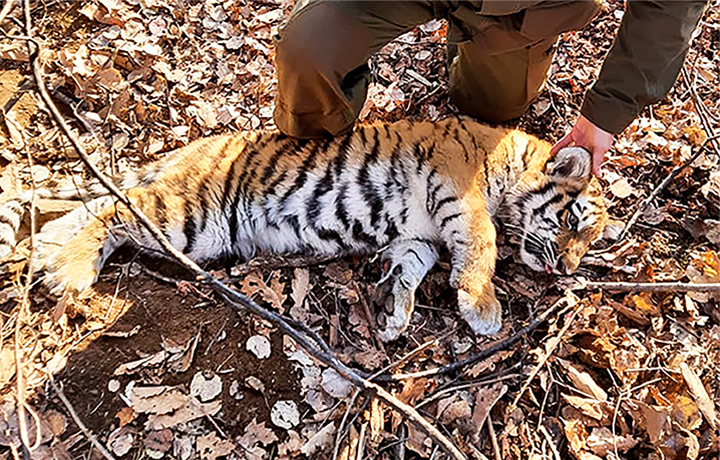
Female cub of Amur tiger, the world’s biggest cat, rescued from poachers trap in Russian Far East. Picture: Amur Tiger Centre
A female cub aged between three and four months old got one of its paws caught in an illegal trap, set by poachers to catch badgers in the woods of the Dalnerechensky district of Primorsky region.
Luckily a local resident noticed the trapped cub, and reported it to wildlife protection authorities.
The site where the cub was found was a ‘badger town’, a multi-level system of badger holes and tunnels with 11 traps – prohibited by Russian hunting rules – set all around it.
Traces of the mother tiger were all around the site, rescuers said.
The adult tigress must have been trying to help the cub, and only left the site when she heard people coming.
She stayed nearby all the time, not attacking the humans freeing her cub.
‘It must have been a child-like curiosity that led the cub to follow the mother and to check badger holes. It couldn’t get out of the trap by itself, and mother was just as powerless. We knew that the mother tigress stayed close all the time, so we acted as fast and as carefully as we possibly could not to provoke ann attack,’ said Sergey Aramilev, general director of the Amur Tiger Center.
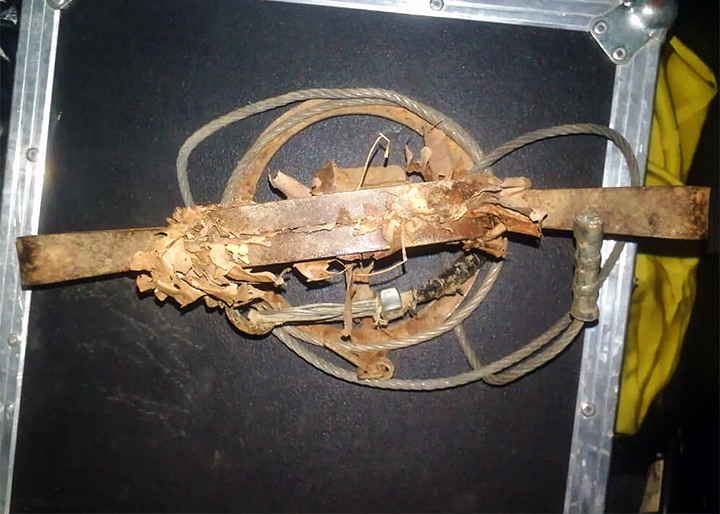
.
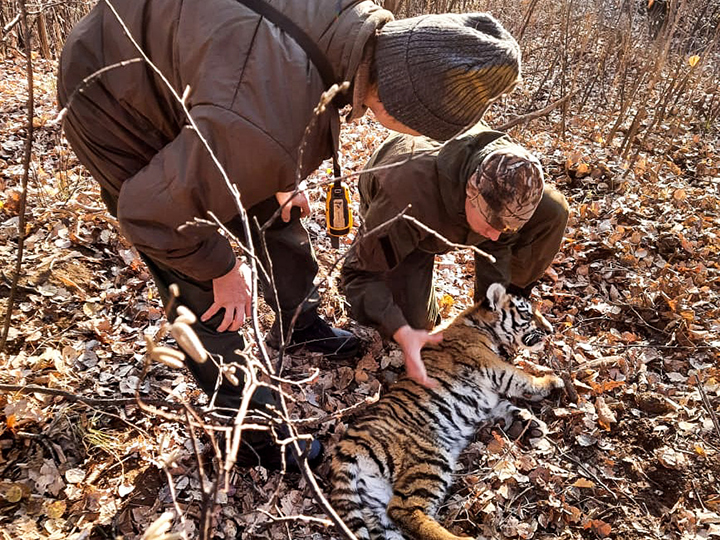
.
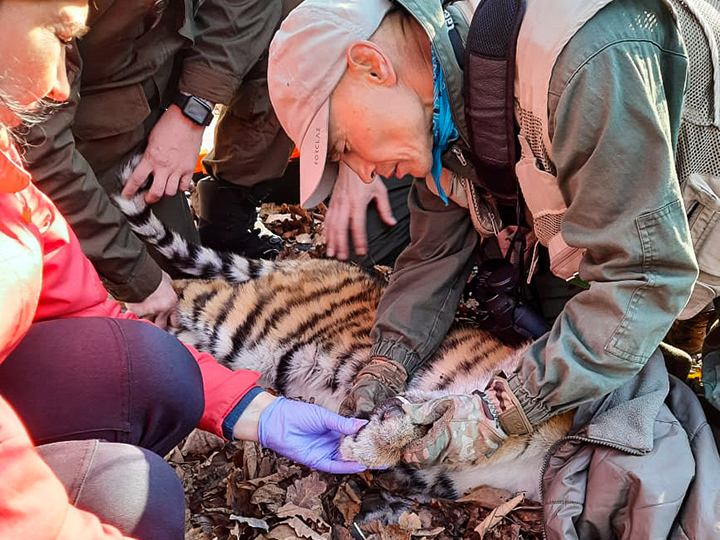
.
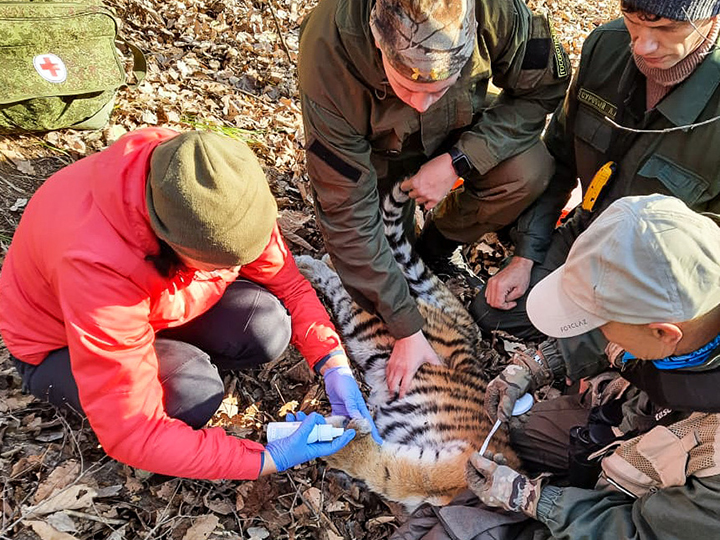
.
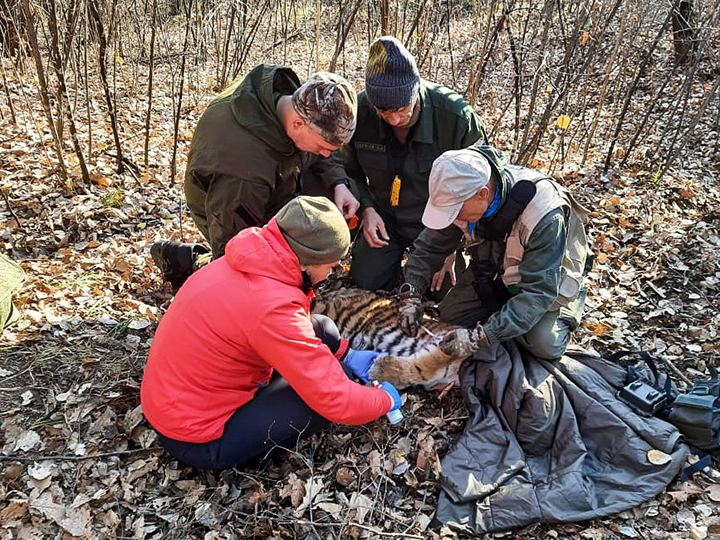
Female cub of Amur tiger, the world’s biggest cat, rescued from poachers trap in Russian Far East. Pictures: Amur Tiger Centre
The team of local wildlife protection experts sedated the young tigress and released her paw.
The trap pulled off one of the front claws, causing minor injuries – most likely the cub got them when trying to free herself.
No health or life-threatening wounds were found, so the rescuers decided to leave the Amur tigress in the wild.
‘We are certain that the cub has already joined its mother, and that it will be more cautious in the future. We received the information just in time to be able to save its life. The longer she was in the trap, the more trauma she could inflict on herself while trying to get free. Under the most unfavourable scenario, the predator could have died from dehydration,’ Sergey Aramilev said.